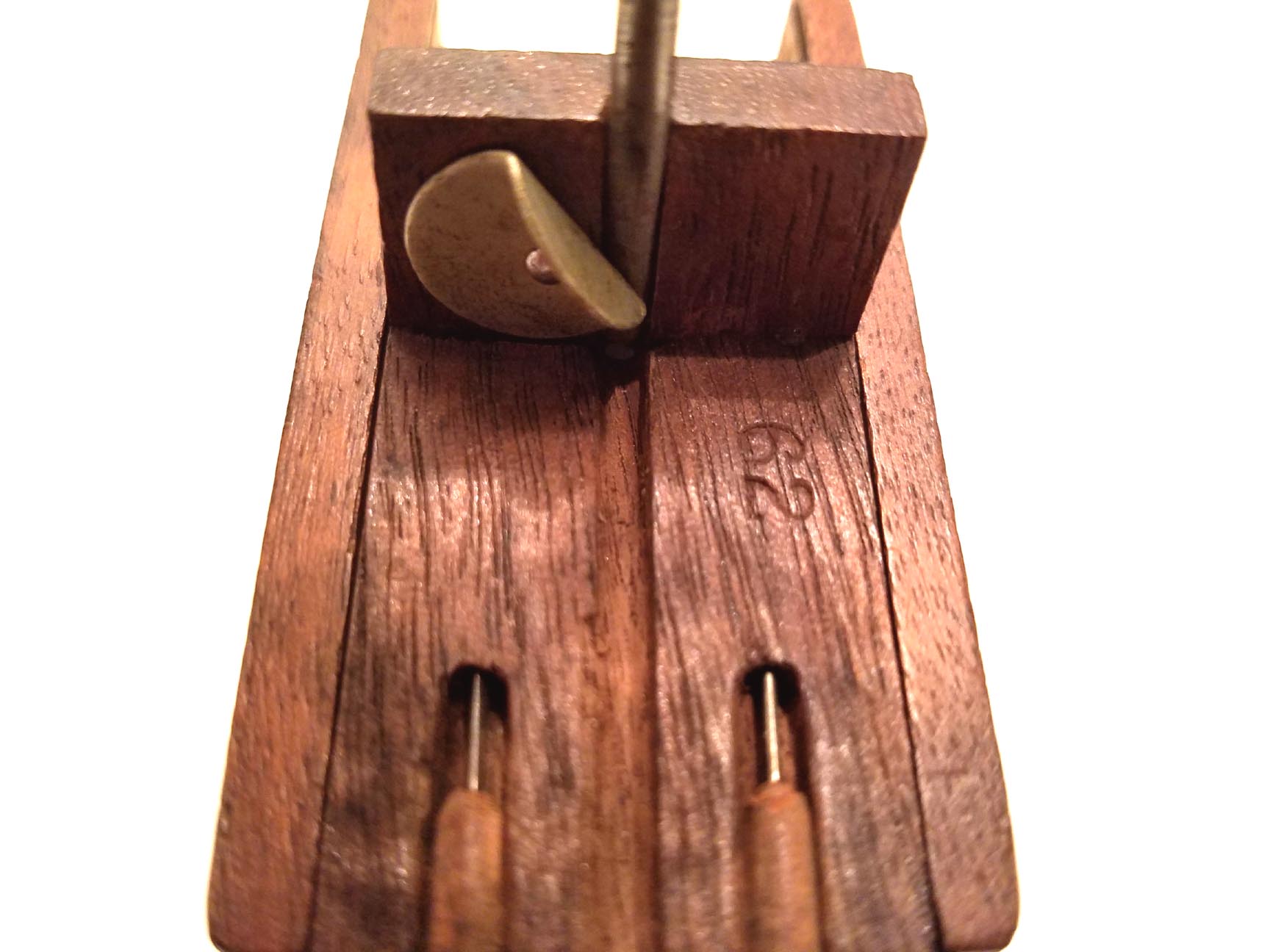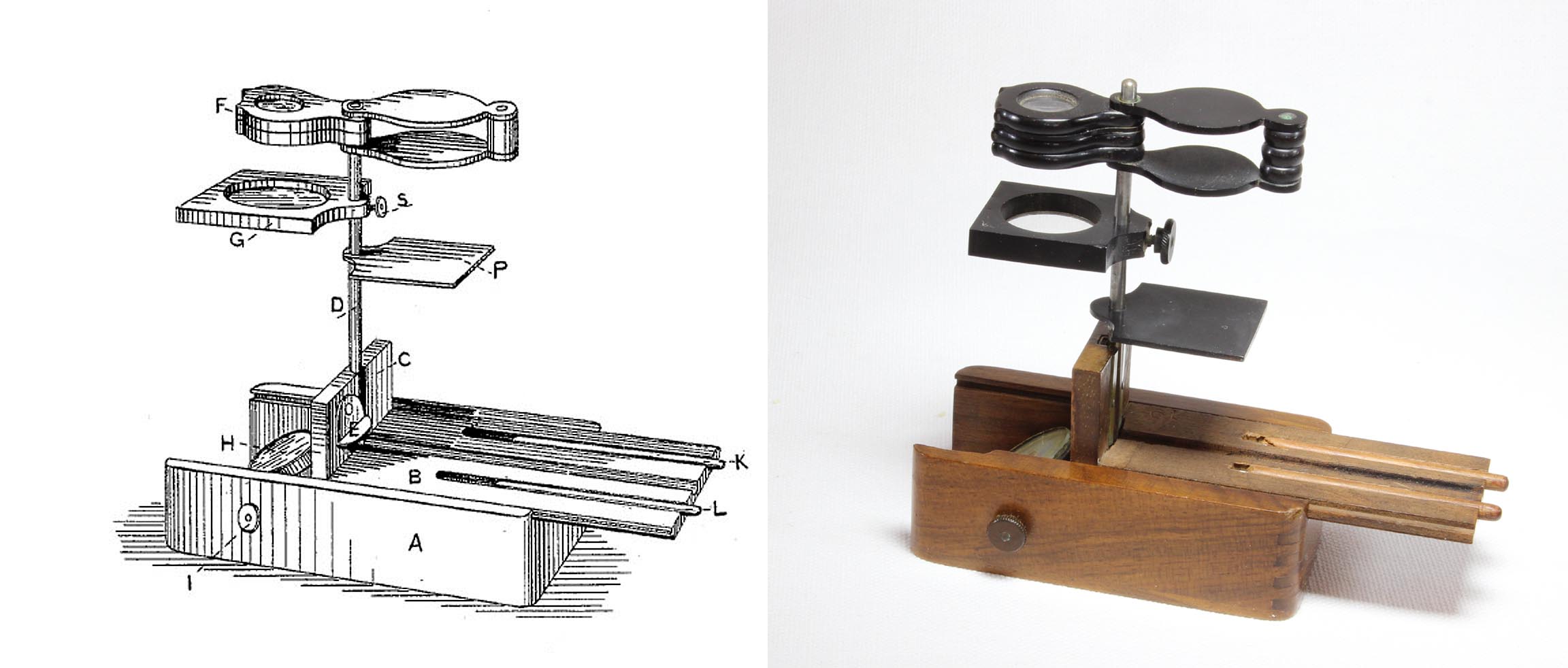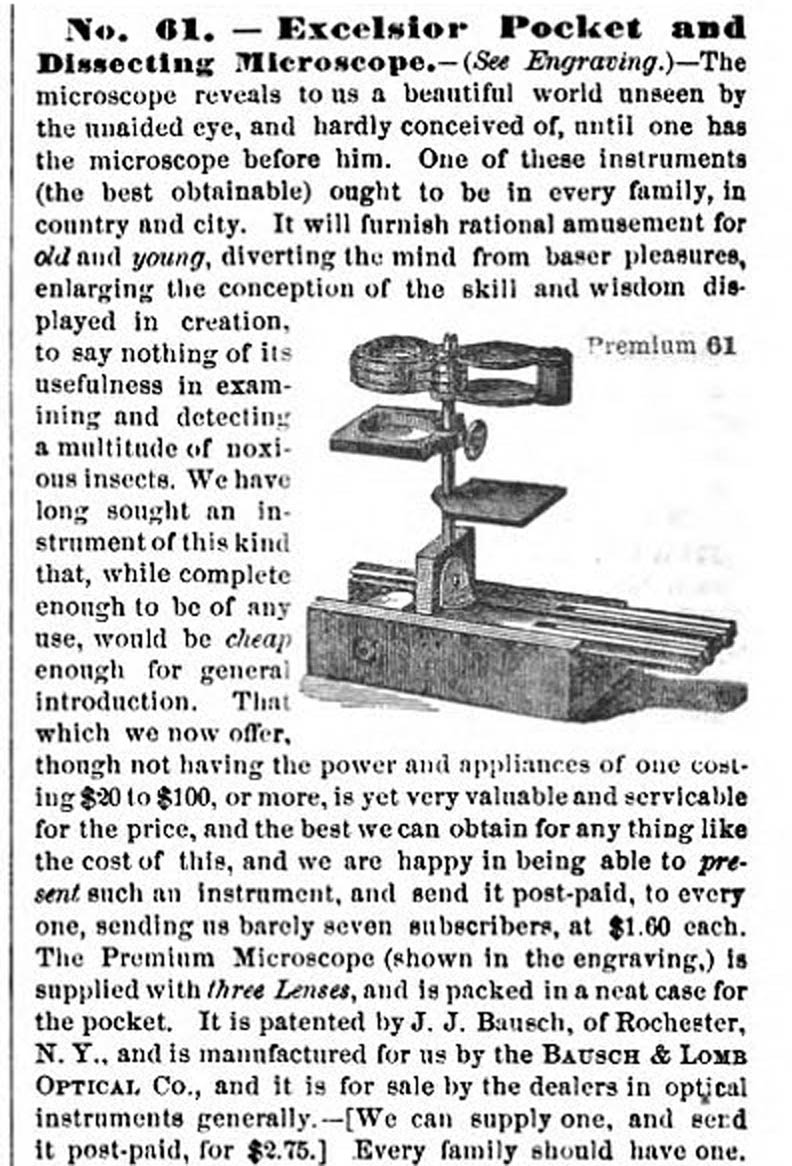MICROSCOPE-ANTIQUES.COM © 2013-15.
EXCELSIOR MICROSCOPE:
c. 1875
Maker: Bausch & Lomb Optical
Serial number: 61
DESCRIPTION
This little microscope invented, by John Jacob Bausch, features a finger-jointed walnut case which also serves as the foot of the microscope. The case measures about 3(L) X 1 1/4(W) X 7/8(H) inches when packed and closed. It is about four inches high when set up for use. To erect it, the lid is removed and flipped so that the microscope support rod, stored on the inside of the lid is now on top. The rod, which is held in place by a sprung fitting, is rotated upward, and held in the erect position by the sprung fitting*. Once erected, three accessories, stored in the box, can be attached by being slid down from above. These include an opaque stage, a stage with a central opening and the three lens system with a diaphragm between two of them. The lenses can be used individually or in combination to achieve different magnifications. The flat mirror can be rotated via a wooden knob protruding from the outside of the case. Two dissecting tools, a thin scalpel and a dissecting needle on small wooden handles store on the inside of the top of the case. It bears the serial number of 61 both on the inside of the lid and on the bottom of the wooden base/case. It is signed on the outside of the case: 'PAT. JUNE 9, '74.'
 *Apparently starting with the very next example, serial number 62, the Excelsior microscopes have a piece of metal, labeled 'e' in the figure below, which holds the rod in its storage position and is moved to the side to allow it to be raised, then allowed back into its original position, locks the rod in place once erect. The author is grateful to Dale Wardner for supplying the image to the left, illustrating the pillar erecting locking mechanism supplied from serial number 62 onward.
*Apparently starting with the very next example, serial number 62, the Excelsior microscopes have a piece of metal, labeled 'e' in the figure below, which holds the rod in its storage position and is moved to the side to allow it to be raised, then allowed back into its original position, locks the rod in place once erect. The author is grateful to Dale Wardner for supplying the image to the left, illustrating the pillar erecting locking mechanism supplied from serial number 62 onward.

 HISTORY OF THE EXCELSIOR MICROSCOPE
HISTORY OF THE EXCELSIOR MICROSCOPE
One of the earliest microscopes produced by B & L, this little microscope was not only marketed by the makers, but also sold by John Phin's Industrial Publication Company and the Orange Judd's American Agriculturist magazine. Its resemblance to the much earlier Brass Nachet Pocket Microscope is readily apparent, though the Excelsior is a much more elementary device. Although large numbers were made, its wooden parts account for the fact that it is not as common now as it was then. It is signed: 'PAT. JUNE 9, '74.' This indeed reflects patent 151746 as included in the illustrations here. This model of microscope was sold for many years. Initially sold, as pictured in the patent drawing with only two lenses, it was soon supplied with three lenses with a a diaphragm between two of them, as in the example shown above. The group of lenses that form the optics of the Excelsior, known early on as a 'botanic magnifier,' was made for hundreds of years, initially of tortoiseshell, later of gutta purcha (hard rubber) as in this example. Incomplete examples of the Excelsior are quite common though complete ones are less common. An improved version of the Excelsior came out later. It was slightly bigger and is much less common. It is generally believed that not many of the 'improved' type were actually produced.
 *Apparently starting with the very next example, serial number 62, the Excelsior microscopes have a piece of metal, labeled 'e' in the figure below, which holds the rod in its storage position and is moved to the side to allow it to be raised, then allowed back into its original position, locks the rod in place once erect. The author is grateful to Dale Wardner for supplying the image to the left, illustrating the pillar erecting locking mechanism supplied from serial number 62 onward.
*Apparently starting with the very next example, serial number 62, the Excelsior microscopes have a piece of metal, labeled 'e' in the figure below, which holds the rod in its storage position and is moved to the side to allow it to be raised, then allowed back into its original position, locks the rod in place once erect. The author is grateful to Dale Wardner for supplying the image to the left, illustrating the pillar erecting locking mechanism supplied from serial number 62 onward.

 HISTORY OF THE EXCELSIOR MICROSCOPE
HISTORY OF THE EXCELSIOR MICROSCOPE